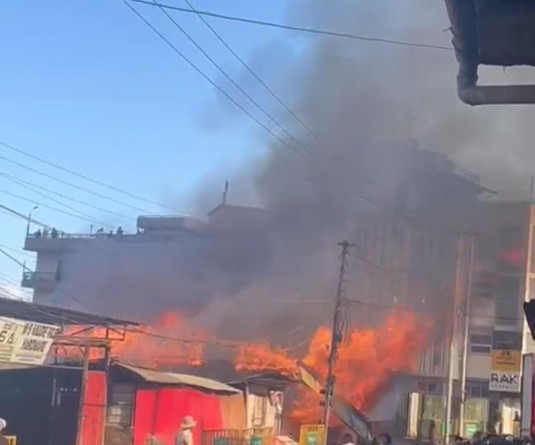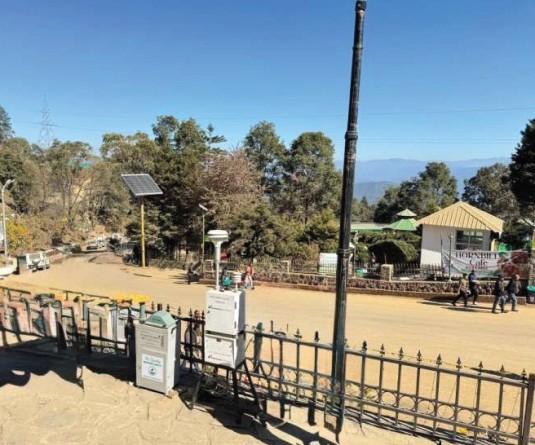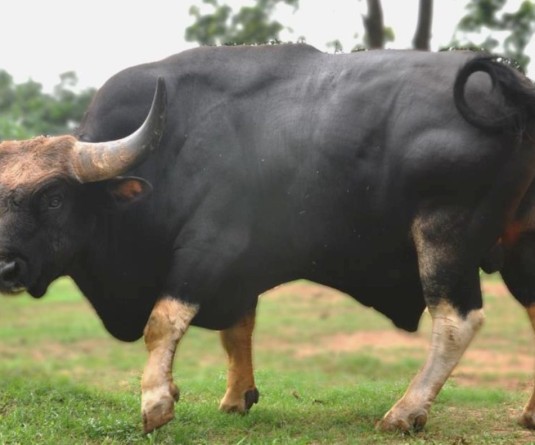
Dimapur, October 14 (MExN): The Nagaland Gorkha Association (NGA) submitted a formal representation to the Government of Nagaland through the Chief Secretary, J. Alam, urging the inclusion of the Gorkhas settled in Nagaland under the Register of Indigenous Inhabitants of Nagaland (RIIN). The delegation, led by NGA President Nobin Pradhan and accompanied by officials from various district Gorkha units, presented their appeal to the Chief Secretary at the State Civil Secretariat.
The NGA's representation detailed the deep historical roots and contributions of the Gorkhas in Nagaland. The association emphasized that Gorkhas have been residing in Nagaland since the 1870s, with early settlers brought by the British to regions such as Kohima, Dimapur, Chumoukedima, Mokokchung, Wokha, and Mon. Over the years, the Gorkhas have woven themselves into the social and cultural fabric of Nagaland, contributing to the state’s development and standing in solidarity with Nagas, especially during historical events like World War II and the Battle of Kohima, it said.
It highlighted how Gorkhas have continued to live harmoniously with the Nagas, receiving equal treatment and contributing to the state's progress. He mentioned that the Gorkhas did not abandon Kohima during the Second World War, fighting alongside the Nagas and playing a pivotal role in rebuilding the city afterward. The Government of Nagaland recognized these contributions during the 125th-anniversary celebrations of Kohima in 2004.
The NGA also brought attention to notable figures from the Gorkha community who have contributed to the state's history and administration. Late Hari Prasad Gorkha Rai, a renowned poet and writer from Kohima, formed a close bond with Naga leader A.Z. Phizo, and actively participated in the formation of the Naga National Council. Additionally, other Gorkhas have served Nagaland as IAS officers, Directors, Chief Engineers, and in other prominent roles, including positions within the Nagaland Police.
The association's request centers on extending the Non-Naga Indigenous Inhabitant certificate to all Gorkhas residing in Nagaland prior to December 1, 1963, consistent with other communities recognized under the 1974 Gazette Notification, such as the Kachari, Kuki, Garo, and Mikir (Karbi). Currently, this recognition applies only to Gorkhas in Kohima, Wokha, and Mokokchung, leaving those in other districts unrecognized.
NGA pointed out that many Gorkha families in areas like Dimapur, Chumoukedima, and Niuland, particularly in settlements such as Singrijan village and Khopanala village, were overlooked in the 1974 enumeration. Given the absence of any mention in the Gazette Notification, the NGA felt their community has been unjustly excluded.
The association also referenced a recent government order from September 2024, which has caused dismay among the Gorkha community. The order implies that the cut-off date for Gorkha enumeration in the state is December 31, 1940, as opposed to the widely recognized date of December 1, 1963. The NGA has requested that the state government maintain consistency by allowing all Gorkhas settled before December 1963 to qualify for Non-Naga Indigenous Inhabitant status.
Citing a 2019 memorandum submitted to a state commission led by former Chief Secretary Banuo Z. Jamir, the NGA emphasized their long-standing appeal for equal recognition. The NGA delegation expressed optimism that under the current administration, their plight would be understood and addressed.






